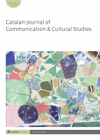
Full text loading...
 , Lucía Caro-Castaño1
, Lucía Caro-Castaño1 , David Selva-Ruiz1
, David Selva-Ruiz1
The sitcom How I Met Your Mother (2005–14) applies a narrative with a transmedia perspective, using advertising techniques that had been unusual for its genre up to that point. We refer to the reverse product placement tool as a technique to expand the narrative in a ground-breaking way through books apparently written by one of the characters in the series. This study explores the communicative dimensions applied by its developers through an exploratory-descriptive methodology that offers a qualitative analysis. We conduct a bibliographic study alongside an exclusive interview with the co-creator of the series, Carter Bays. Consequently, our study dissects the communicative process from a semantic and advertising perspective with an international reach. Finally, the results identify a paradigmatic case that takes advantage of the communicational context to build a transmedia narrative, giving rise to an intertextual and parasocial interpretation.

Article metrics loading...

Full text loading...
References


Publication Date:
https://doi.org/10.1386/cjcs_00098_1 Published content will be available immediately after check-out or when it is released in case of a pre-order. Please make sure to be logged in to see all available purchase options.